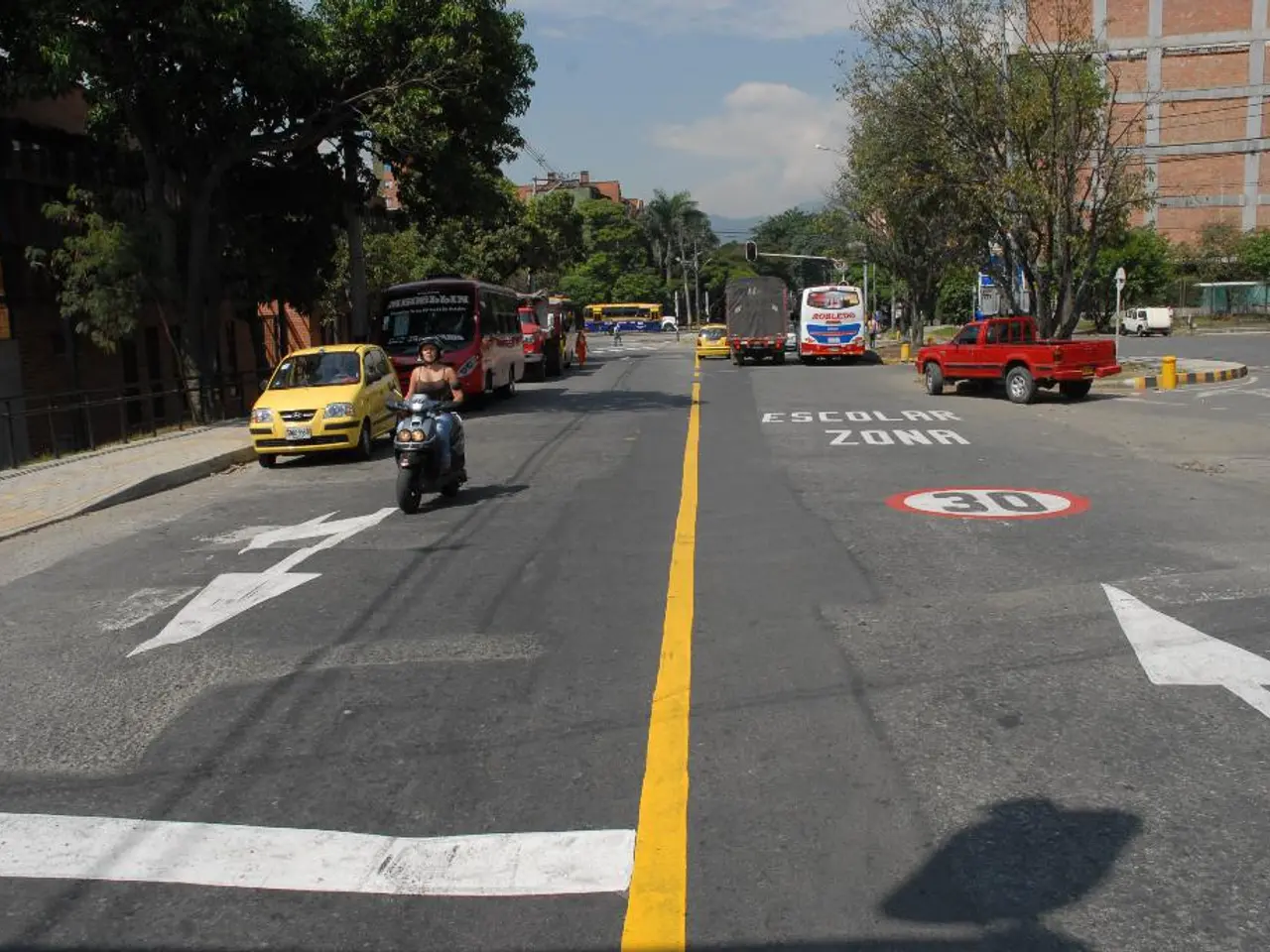Limited Knowledge of Traffic Signs Highlighted by ADAC Expert: Gaps Identified - Unknown Road Signs Pose Challenges for Many - Expert Highlights Knowledge Deficits
In the bustling landscape of German roadways, a debate has been brewing about the excessive number of traffic signs, with the General German Automobile Club (ADAC) voicing concerns. However, a pilot project by ADAC suggests that a third of these signs could be removed without causing problems.
This article aims to shed light on some lesser-known German traffic signs and their meanings, reflecting Germany's emphasis on clear, sometimes nuanced road communication.
One such sign is the 'Snow Chains Required' sign, depicted as a blue circular sign showing a tire wrapped in chains. This sign indicates that snow chains must be fitted to your vehicle, and the maximum speed on these roads is limited to 50 km/h.
Another interesting sign is the 'Traffic Restriction Zone' sign, which is used in many German cities. This sign, along with others, shows which vehicles are allowed entry based on emissions stickers (Umweltplakette). A black and white version with diagonal stripes marks the end of such a zone.
The 'Minimum Following Distance' sign applies specifically to vehicles over 3.5 tonnes and instructs drivers to maintain a minimum distance from the vehicle ahead, measured in meters.
Germany also employs unique signs to encourage voluntary speed adjustments, such as the 'Green-Bordered Speed Limit Signs.' These signs indicate recommended speeds rather than mandatory limits, relying on driver responsibility to improve safety and traffic flow.
The yield sign in German road traffic is triangular and stands upside down, while mandatory signs are round and blue. The stop sign is octagonal and recognizable by its shape alone, and prohibition signs are round, white with a red border.
Two unique signs that every driver must recognize are the red dot with an arrow, which marks a pre-established large-scale detour, and the sign with a black dot in a black circle, which indicates the center of towns.
For drivers seeking to refresh their knowledge, resources like ADAC's website (adac.de) or driving safety training courses are available. It's essential to be aware of certain features that help identify some traffic signs, such as the traffic sign pointing to a parking space reserved for car-sharing vehicles, primarily found in large cities.
However, a recent ADAC test revealed that many drivers struggle with basic questions, such as the zipper merge, indicating significant knowledge gaps among German drivers.
In conclusion, understanding Germany's road signs is crucial for ensuring safety on the roads. While some drivers may find the system complex, the emphasis on clear, environmental, and nuanced communication sets Germany apart in road safety.
- In the realm of education-and-self-development, the General German Automobile Club (ADAC) provides resources, such as their website (adac.de), to aid drivers in refreshing their knowledge about traffic signs, vocational training that could potentially save lives.
- Venturing into the field of industry, ADAC's pilot project on reducing traffic signs points to a potential need for vocational training in efficient and effective roadway management, which could impact the finance sector by reducing costs associated with maintaining excessive signage.
- As for lifestyle and home-and-garden matters, being aware of signs like the one indicating parking spaces reserved for car-sharing vehicles could be beneficial for those embracing eco-friendly transportation choices, contributing to a sustainable and responsible lifestyle.




